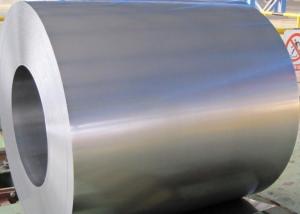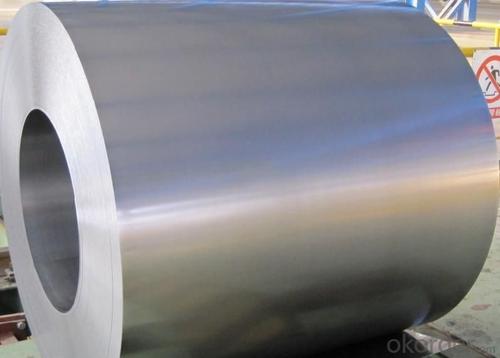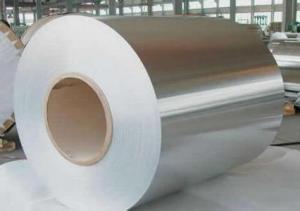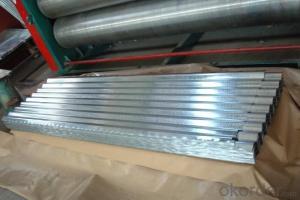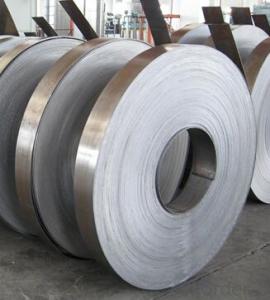Best Quality For Aluzinc Steel Coil-AZ150
- Loading Port:
- China Main Port
- Payment Terms:
- T/T or L/C
- Min Order Qty:
- 25mt m.t.
- Supply Capability:
- 5000mt/per month m.t./month
OKorder Service Pledge
OKorder Financial Service
You Might Also Like
General Information Of Galvalume Steel Coil AZ150
With Cold Rolled Steel as base metal,with the aluzinc coated, finally the plate steel is called galvalume steel. Galvalume steel is good capable of decoration, molding, corrosion resistance. It generally displays superior workability, durability and weather resistance.
|
Thickness 0.25-4.0mm (BMT) |
|
Aluzinc Coating 50-150g/m2 |
|
Width 900-1250mm |
|
Internal Diameter 508mm or 610mm |
|
Coil Weight 4-8MT |
|
Quality Commercial and structural quality |
|
Surface Treatment Oiled or Dry, Chromated, Anti-finger,Non-skinpass,/ Skinpass |
|
Standard JIS G 3321, ASTM A792M, EN 10215 |
|
Base Steel Grade SGCC,SGCD,DX51D+Z,DX52D+Z;S200GD,S220GD, S280GD,S350GD,CS,FS,SS |
Chemical Composition Of Galvalume Steel
|
C |
Si |
Mn |
P |
S |
|
0.04-0.06% |
0.01-0.03% |
0.18-0.22% |
0.014-0.016% |
0.006%-0.009% |
Technical Data Of Galvalume Steel
|
Yield Strength |
(Mpa) 280-320 |
|
Tensile Strength |
(Mpa) 340-390 |
|
Elongation |
20%-30% |
|
Out- of-Square |
Not exceed 1% Flatness |
|
Bow |
15mm max |
|
Edge Wave |
9mm max |
|
Centre Buckle |
8mm max |
|
Bending At 180 Degree |
No crack, purling and fraction |
Application Of Galvalume Steel
Aluzinc Steel can be widely used in transportation, light industry, civil usage and farming. It is also the perfect building material in construction for making roofing tile, steel profiles for wall partition, T-bar, studs, fireproof door, air conditioning duct and home appliances.
Packaging & Delivery Of Galvalume Steel
Full wrapped with anti-damped paper inside, iron sheet wrapped outside, and bundled with iron strips.
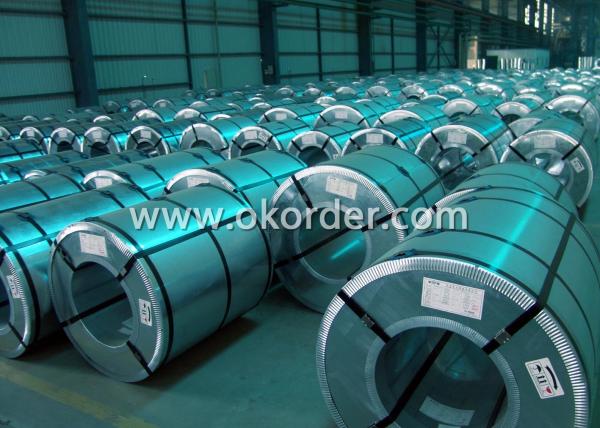
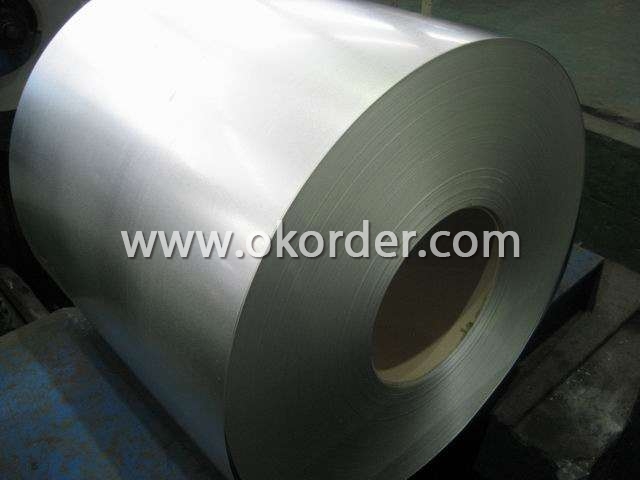
- Q: I haven't seen Man of Steel yet, but which one do you think was better? (please no spoilers)
- Well, I haven't seen it Man of Steel but I really see it hard to believe that's better than Superman. To me, Superman with Christopher Reeve is the best movie about Superman ever made. When I first saw it I was amazed. Watching Superman flying for the first time, catching Loise and graving that helicopter before it falls... it was awesome! I loved it! The other movies that followed were bad but this one was amazing. I've seen what other actors have made with the character, but I believe Christopher was the best. He was the perfect man, the perfect gentleman and the best superhero ever. I know that this Superman is for the new generations so it will be more 'real' and more 'suffered' or will have more personal issues dealing with his origins and blah blah blah... and I wish him good luck, but honestly? I stick to the original Superman because whenever I see Christopher Reeve flying around the planet as Superman (hanging from wires-no CGI people!) and I hear that characteristic music I just melt and I'm a child once more. So good luck to the new generation, I really hope they like this new guy and new story, but I'm more than fine with the original version, thank you. Hope it helps! ;)
- Q: Can steel coils be coated with organic materials?
- Yes, steel coils can be coated with organic materials. Organic coatings such as paints or varnishes can be applied to steel coils to provide protection against corrosion, improve aesthetics, or add other desired properties.
- Q: I don't know why but I'm having a VERY difficult time finding the melting point of 1008 steel.
- It is still the same for 1008 steel. Go to the bottom and see the listing of the grades it covers. Since the only difference between the 1006 and 1008 steel is a few micro amounts of alloys and by far the greatest majority or main component is iron (99%), as a general melt temperature , 2750 F is the melt temperature at which the other alloys are added to the charge to fine tune the mix. Just like adding salt to distilled water actually lowers the boiling point of water, adding alloys to iron decreases the melting point of iron. The iron melts at 2800F, but once alloys to make the 1008 grade are added, it decreases melt temp to 2750F. Since the melting point of pure iron is 2800F, the temperature is actually decreased by adding these impurities of alloys. These alloys are tested while the mix is starting to come down from a pure melt, steel is sampled. and then alloys below are checked and added to make the 1008 steel. The steel is maintained at 2750 F so that the less volatile alloys don't boil off before combining with steel. Minimum Properties Ultimate Tensile Strength, psi 43,900 - 51,900 Yield Strength, psi 26,100 - 34,800 Elongation 42 - 48% Chemistry Iron (Fe) 99% Carbon (C) 0.08% Manganese (Mn) 0.6% max Phosphorus (P) 0.035% max Copper (Cu) 0.2% min Sulfur (S) 0.04%
- Q: So here's the deal:I recently bought McCann's Instant Steel-Cut Oatmeal, and I'm wondering about any possible nutritional differences between the instant and regular stove-top. In case you haven't seen it, instant steel-cut comes in individual packets and is cooked only by adding boiling water, the same as instant rolled oatmeal (i.e. Quaker).When I asked about instant vs. stove-top rolled oats, my doctor said there are no significant nutritional differences, but since the main health appeal of steel-cut is the coarse grain, it doesn't seem possible for the finer ground instant to be as nutritious.I can't find much info about this, so any help is appreciated!
- Most people who are used to rolled oats have a very hard time adjusting to steel cut oats that are cooked only 30 minutes. For many, it's not much different than eating them raw. (Raw, soaked oats is called cram. Having to eat uncooked oats, as only the poorest would do, gives us the expression 'to cram it down your throat'.) Better still is to cook them thoroughly at night then reheat portions for breakfast if you're in a hurry. They'll keep about five days at a time under refrigeration. Any small nutritional loss from longer cooking is more than compensated by the better digestibility of well-cooked oats. That is, the nutrition is wasted if the oats pass undigested through the body. For most of us, that would happen. Indeed, we are not cows. Neither are we horses. People need to cook their oats.
- Q: What are the dimensions of steel coils used in the construction materials industry?
- The dimensions of steel coils used in the construction materials industry can vary depending on the specific application and requirements. However, common dimensions for steel coils in this industry range from 0.5mm to 3mm in thickness and 600mm to 2000mm in width. The length of steel coils can vary, but it is typically between 1000mm to 6000mm.
- Q: How much do steel coils weigh?
- The weight of steel coils can vary depending on their size and thickness, but on average, they can weigh anywhere from a few hundred pounds to several tons.
- Q: How are steel coils used in the manufacturing of cables?
- Steel coils are used in the manufacturing of cables as they provide strength and support to the cable structure. The steel coils are typically used as armor or reinforcement, helping to protect the cables from external elements and maintain their structural integrity.
- Q: What are the typical dimensions of a steel coil?
- The typical dimensions of a steel coil can vary depending on its purpose and industry standards. However, common dimensions for steel coils include a width ranging from 600mm to 2000mm, a coil diameter of around 1000mm to 2000mm, and a weight capacity ranging from a few tons to several dozen tons.
- Q: Is this a strong, durable piece of steel that can take abuse? I'm thinking about using it on a small project.
- I think it might be a bit brittle and could break from metal fatigue.
- Q: How are steel coils used in the agricultural sector?
- Steel coils are used in the agricultural sector for various purposes such as manufacturing machinery, constructing storage facilities, and creating equipment like irrigation systems and grain bins. They provide strength, durability, and flexibility to support the demanding needs of the agriculture industry.
1. Manufacturer Overview
| Location | Wuxi, China |
| Year Established | 2002 |
| Annual Output Value | US$1 Million - US$2.5 Million |
| Main Markets | Mid East Northern Europe North America Eastern Asia Africa Eastern Europe Southeast Asia Western Europe Southern Europe |
| Company Certifications | ISO 9001;ISO 14000 |
2. Manufacturer Certificates
| a) Certification Name | |
| Range | |
| Reference | |
| Validity Period |
3. Manufacturer Capability
| a) Trade Capacity | |
| Nearest Port | Shanghai |
| Export Percentage | 1% - 10% |
| No.of Employees in Trade Department | 50 |
| Language Spoken: | English; Chinese |
| b) Factory Information | |
| Factory Size: | Above 600,000 square meters |
| No. of Production Lines | 10 |
| Contract Manufacturing | OEM Service Offered |
| Product Price Range | Average |
Send your message to us
Best Quality For Aluzinc Steel Coil-AZ150
- Loading Port:
- China Main Port
- Payment Terms:
- T/T or L/C
- Min Order Qty:
- 25mt m.t.
- Supply Capability:
- 5000mt/per month m.t./month
OKorder Service Pledge
OKorder Financial Service
Similar products
Hot products
Hot Searches
Related keywords
